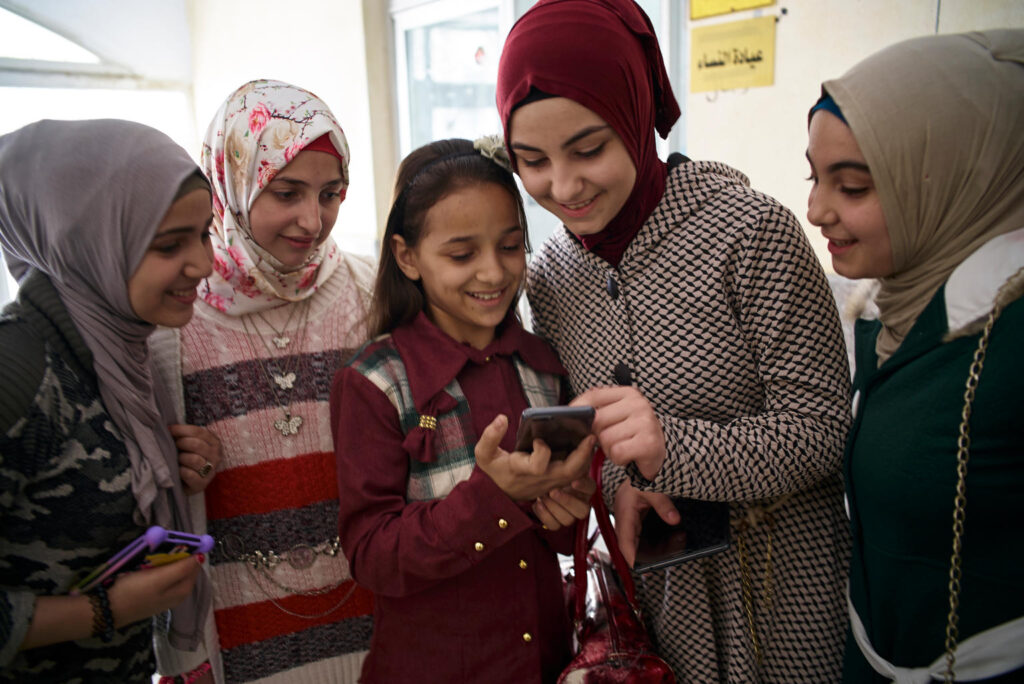As part of its joint initiatives with ESA Φ-lab, UNICEF is appointing two researchers to work on a project that forms part of the UN Secretary-General’s Digital Cooperation Roadmap. The project maps current access to electricity and the Internet for schools around the world in support of an ambitious UNICEF target to provide connectivity for every child by 2030.
Around half of the world’s schools have no Internet access, and 1.3 billion children do not have connectivity at home. The result for those young people is fewer opportunities to learn and fulfil their potential.
In an effort to close this digital divide, UNICEF and the International Telecommunication Union have created Giga, a global initiative aimed at connecting every school to the Internet by 2030. Giga recognises that connecting schools enables children to develop digital skills and access online learning, while also providing wider connectivity benefits for businesses and services in the surrounding communities.
A crucial step in reaching Giga’s goal is to understand the current connectivity status, but many governments do not have comprehensive information on the locations of schools in their country or whether schools have electricity or Internet access. With its expertise in interpreting satellite- derived data through artificial intelligence, ESA Φ-lab is extremely well placed to offer a helping hand in this area and already has experience of fruitful collaboration with UNICEF in research on predicting dengue fever outbreaks.
In a project with Giga that profiles school catchment areas to predict grid connectivity, Φ-lab is employing techniques such as Support Vector Machines and Multi-Modal Deep Learning Networks to analyse both Earth observation and terrestrial datasets. “We set out to answer a number of questions that would improve today’s information and deliver comprehensive, credible data on schools around the world,” explains Φ-lab researcher Casper Fibaek. “We’ve already used our models to validate current UNICEF data on school coordinates and have identified 65 000 incorrect locations in Brazil, for instance. We’re now looking at estimating the student count per school by combining catchment-area modelling with population maps.”
The project is about to benefit from two new colleagues, both visiting researchers from UNICEF. The first appointee is Abi Riley, who after completing a Masters degree in mathematics in the UK is currently working on a PhD on spatio-temporal methods for environmental health modelling. The second researcher will be announced in the near future. Abi and her colleague will be working on measuring the likelihood of schools being connected to the Internet and mains electricity network through such diverse sources as NASA’s VIIRS Nighttime Imagery, Copernicus Sentinel 2 and auxiliary data on mobile phone usage.
“Abi will be most welcome in our very collaborative and catalytic research space,” added Φ-lab AI Applications Lead Rochelle Schneider, who also led the multi-award-winning dengue project with UNICEF. “I’m sure both she and the second appointee will make a remarkable contribution to a project that demonstrates Φ-lab’s continuing relationship with the UN for the benefit of disadvantaged communities.”
Dohyung Kim, Giga’s Lead Data Scientist, stressed the significance of having comprehensive data: “In our mission to connect every child to the internet by 2030, having actionable insights on Internet access is a fundamental component. This enriched data perspective allows us to understand and address the challenges faced by different schools and regions. We’re excited to continue our collaboration with our friends at ESA Φ-lab on this initiative. Furthermore, I am inspired by the fact that these two research posts reinforce our commitment to promoting opportunities for young scientists worldwide.”
The news was originally published on the European Space Agency Φ-lab page.

